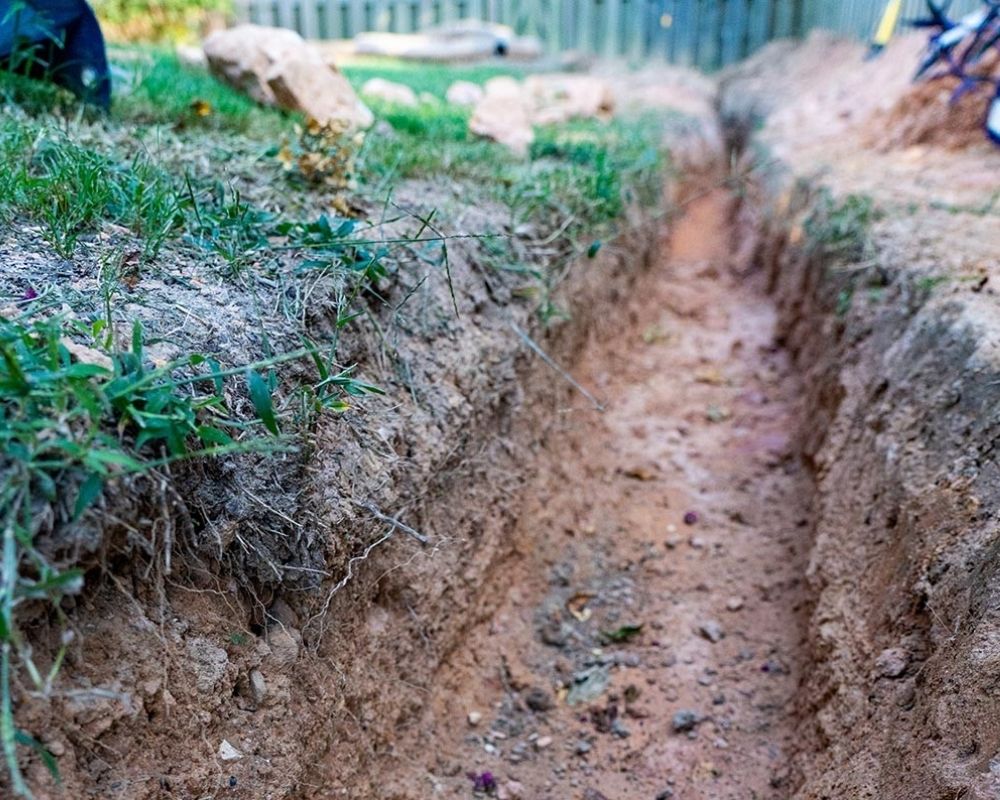Having a French drain installed is a good investment and a common occurrence in Kansas City. After all, nobody likes having a basement that seems to stay partially flooded. Do you need a French drain to keep this from becoming a problem? The short answer is yes if you need water directed away from your house.
However, there are reasons to use alternatives to French drains as well. Let’s take a closer look at French drains vs. other drains, using a sump pump, and how to keep water from getting in your basement in the first place.
Having a French Drain Installed is a Good Investment for These Reasons
What is a French drain and why might it be helpful if you have water in your basement? A French drain is a type of trench in your basement, below ground level. A perforated pipe helps direct the water away from your home. The dimensions of the drain are very important.
The trench for the drain must be a minimum of 12” wide and 1 ft. deep to hold everything in place. Washed gravel around the help keeps out potential clogs, while water-permeable landscaping fabric helps keep weeds from taking root in this area.
However, there are some potential drawbacks, one of which is the cost, which may exceed $7,000. Another thing to consider is that French drains often have sediment accumulating, which is somewhat difficult to clear out. Settling is also a potential problem, and the drain may require replacement after ten years or so.
What Types of Drains Are Alternatives to French Drains?
Having a French drain installed is a good investment, but some alternatives work better for some homeowners. Exterior drain tiles installed around your home’s foundation perimeter collect water using a flexible drain pipe, allowing it to get pumped back to the surface. Like a French drain, this type of drain is also expensive to install and may clog.
Floor drains are included in many homes during construction. However, they are not as commonly added after construction because most homes lack the natural dip required for floor drains to work. These drains are also nearly as expensive to add post-construction as French drains.
Curtain drains are often an option in cases where a yard has a lot of standing water. This drain takes the form of a trench that directs the accumulated water downward. Gravel is used to absorbing the water at the end of the trench.
Having a French Drain Installed in the Basement is a Good Investment and So is a Sump Pump
Sump pumps work in tandem with your basement drains to direct water away from your home. There are two kinds of sump pumps that you might use in your basement.
Pedestal sump pumps sit on a pole an average of 4 to 8” above the collection pit. This pump rises with the water level because of an attached float. This pump turns on to direct the water to your yard once reaching a certain level. Total purchase and installation costs average under $2,000. However, a drawback is that pedestal pumps lack the power required for serious groundwater issues.
Submersible pumps are installed at a depth of about a foot deep in the basement. These pumps power on to push the water out once the water is within a few inches of the pump’s top. The purchase and installation costs for submersible pumps are similar to the costs for pedestal pumps. However, submersible pumps are a superior choice for homes that have a lot of groundwater issues.
A GFCI outlet is required for both types of pumps. These outlets help prevent electrical fires, as well as electrocution.
Preventing Problems with Water in Your Basement
There are a few things that you can do to eliminate the chances of problems with water in your basement, helping you protect your foundation. Read on to learn about these preventative steps.
Having properly installed gutters that stay free from clogs is important. Your home maintenance should include regular gutter cleaning. Downspouts that extend a minimum of 4-10 ft. from your home are also essential. If the downspout has a splash block, that will also help divert away damaging water.
Another to consider is your home’s grading, which impacts how easily you can divert water away from your home’s foundation. Positive grading that slopes away from your home are what you need to keep water out of the basement.
The presence of a basement is something that you need to keep in mind with your landscaping. Shrubs and bushes that require a lot of water need to be distanced from your home to prevent water from seeping into your basement.
When to Call a Professional to See About a French Drain
If you have water leaking into your basement, this is as good an occasion as any to check into your options. A professional will be able to guide you through everything to select the perfect solution. If there are any other issues with your foundation that require attention, you will be able to take care of them.
A French drain or its alternatives may help you avoid serious damage in your basement or crawlspace. Contact us to discuss the options best for your circumstances.

